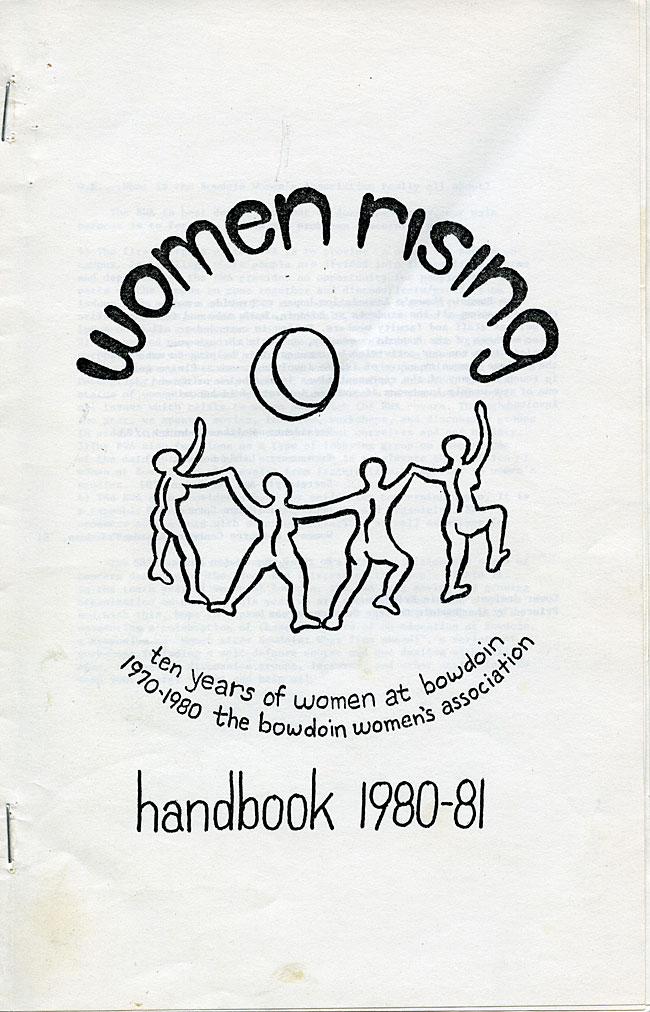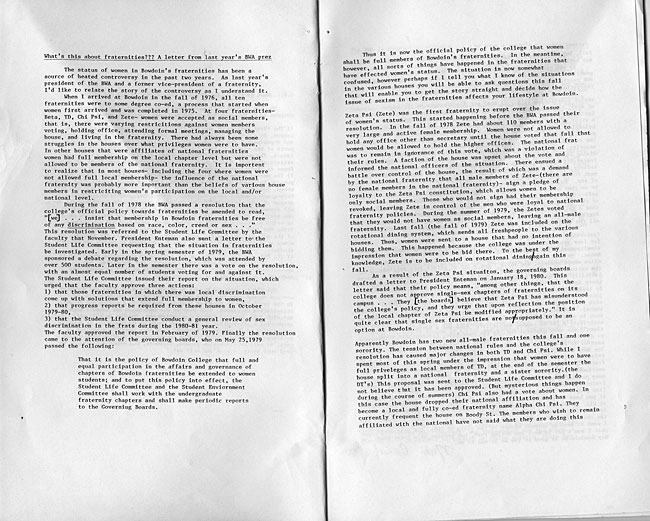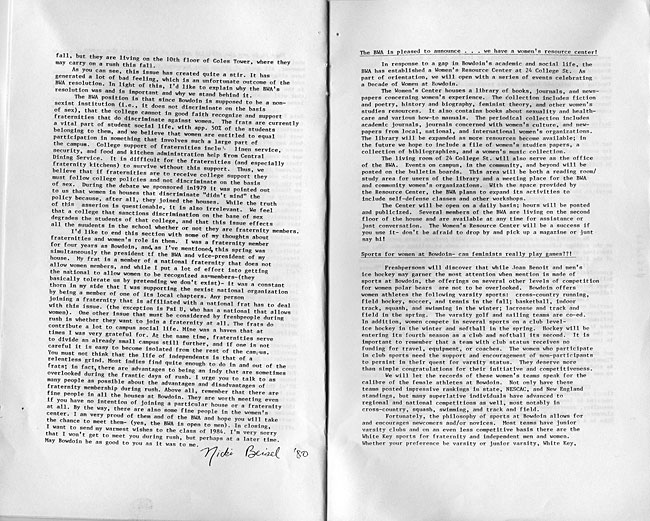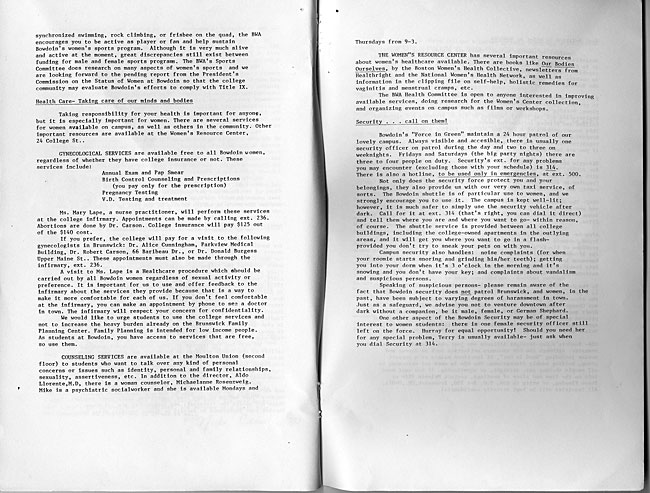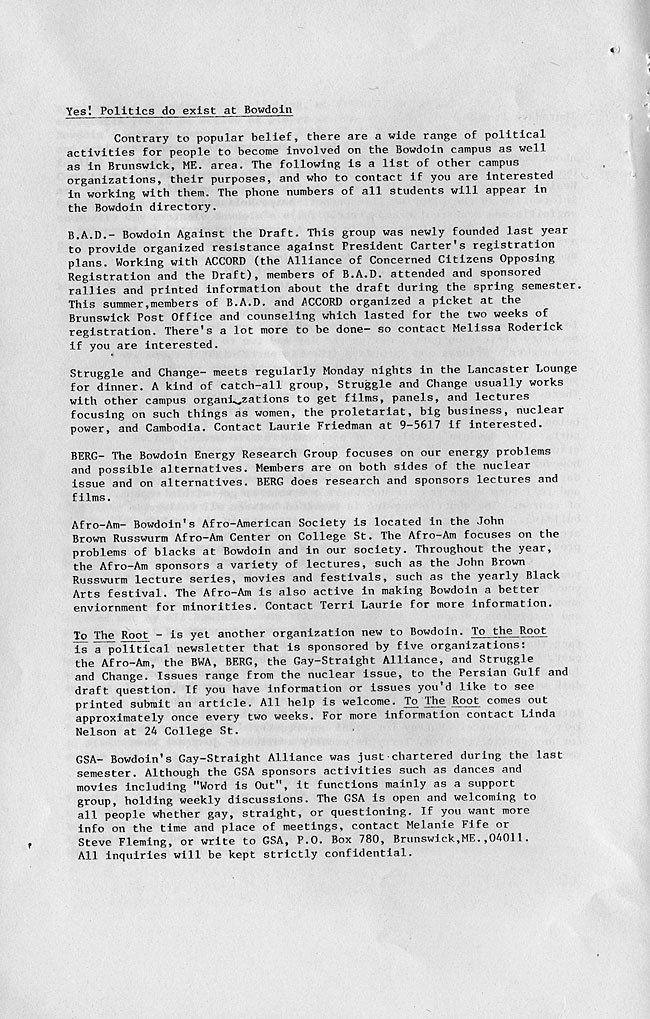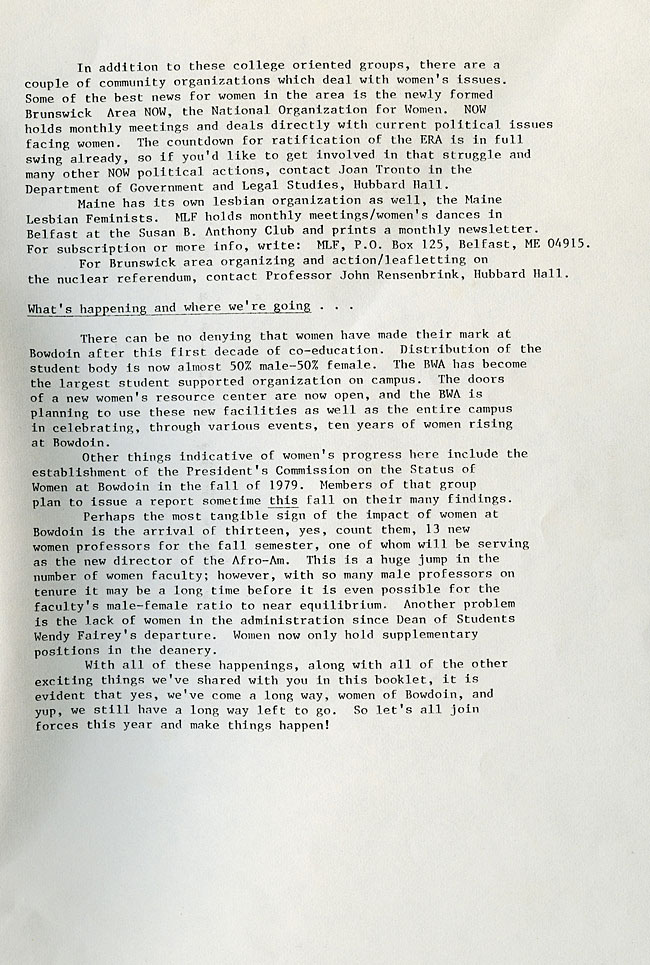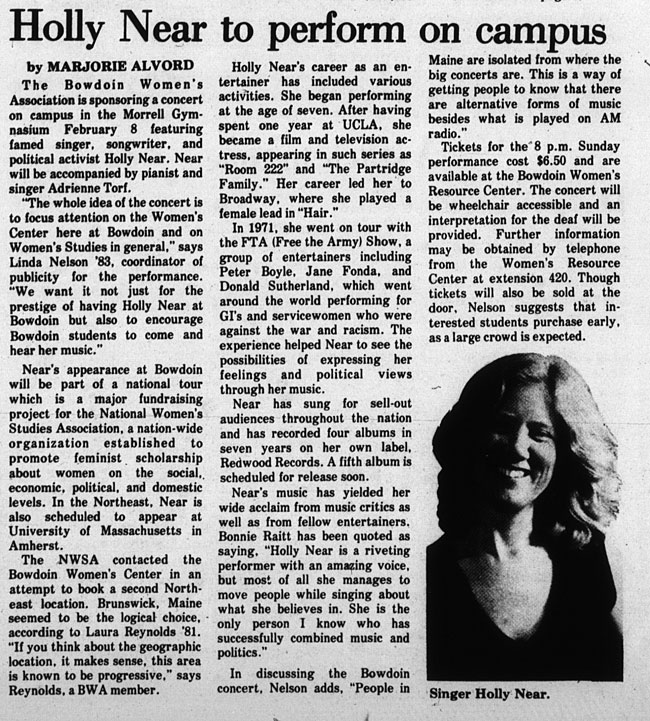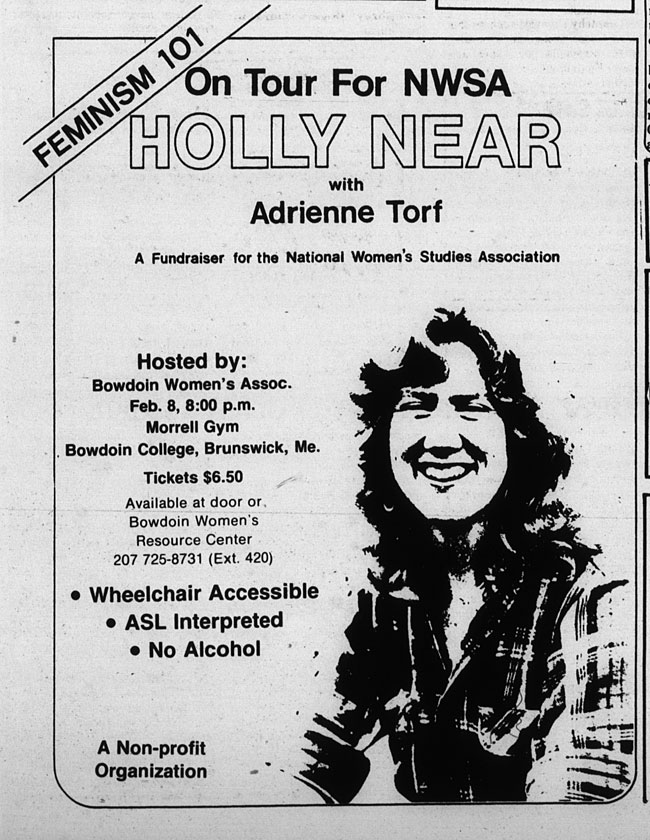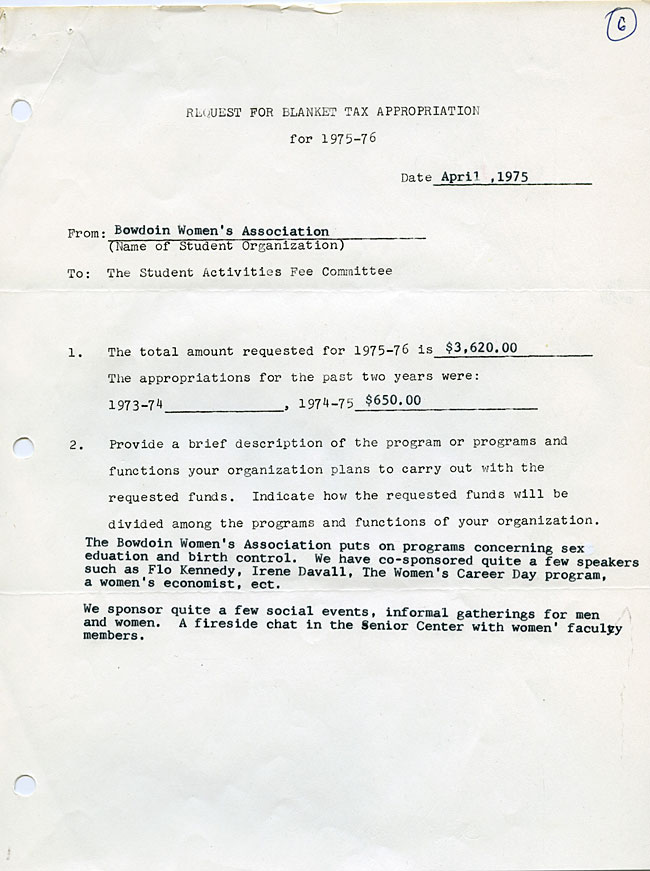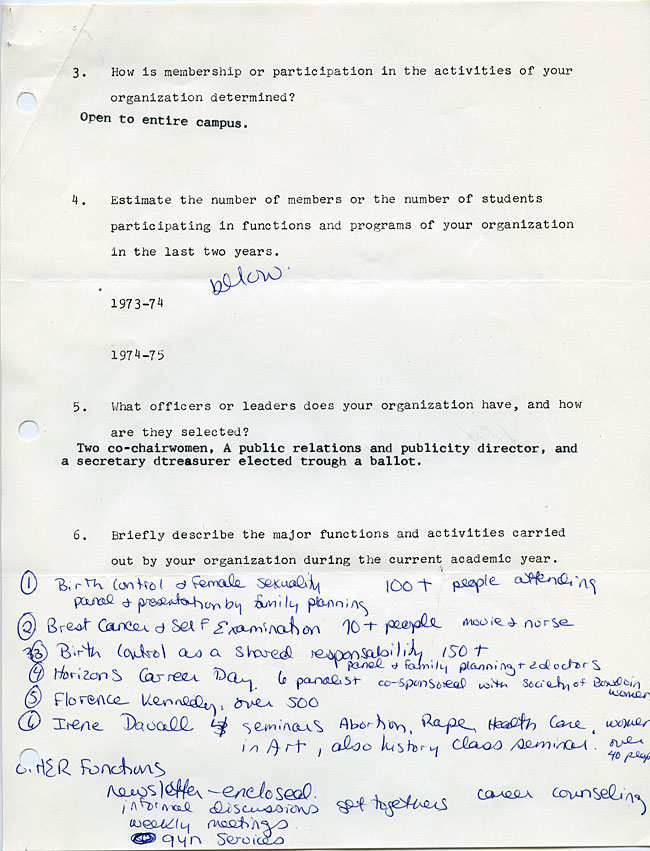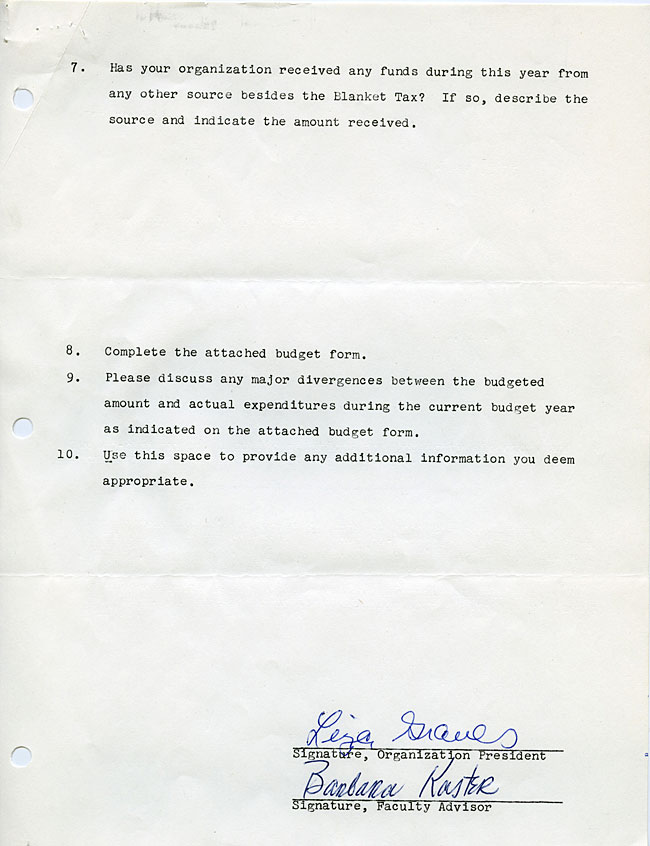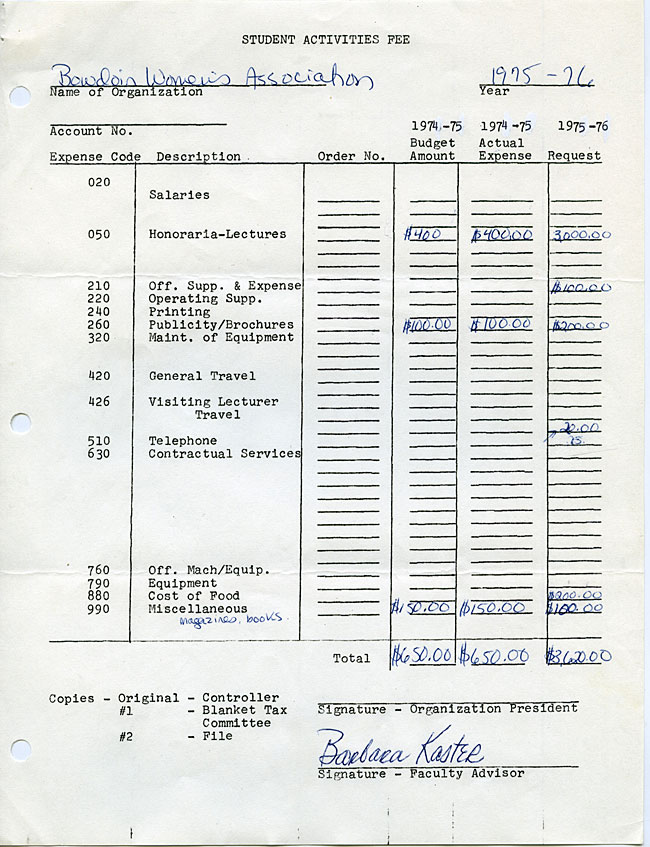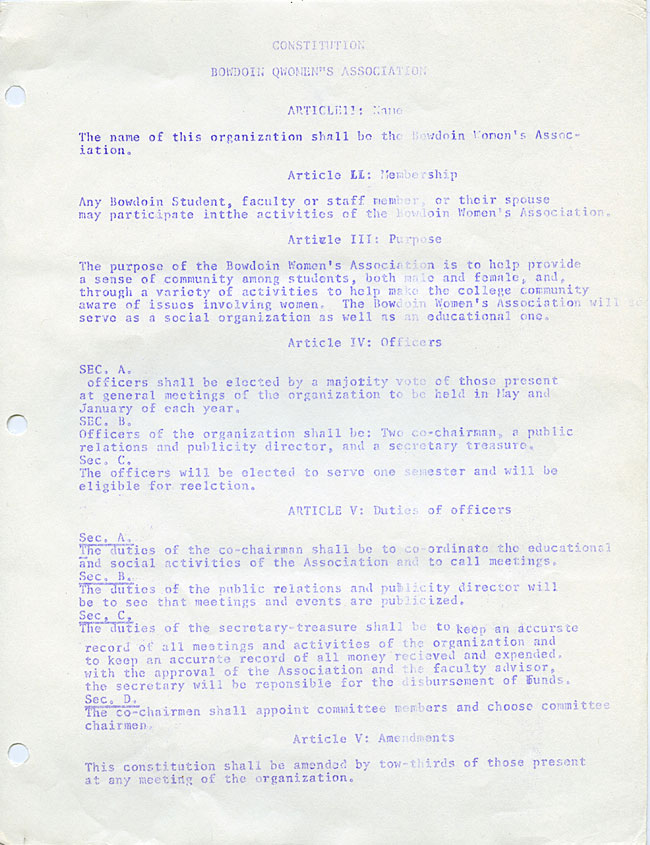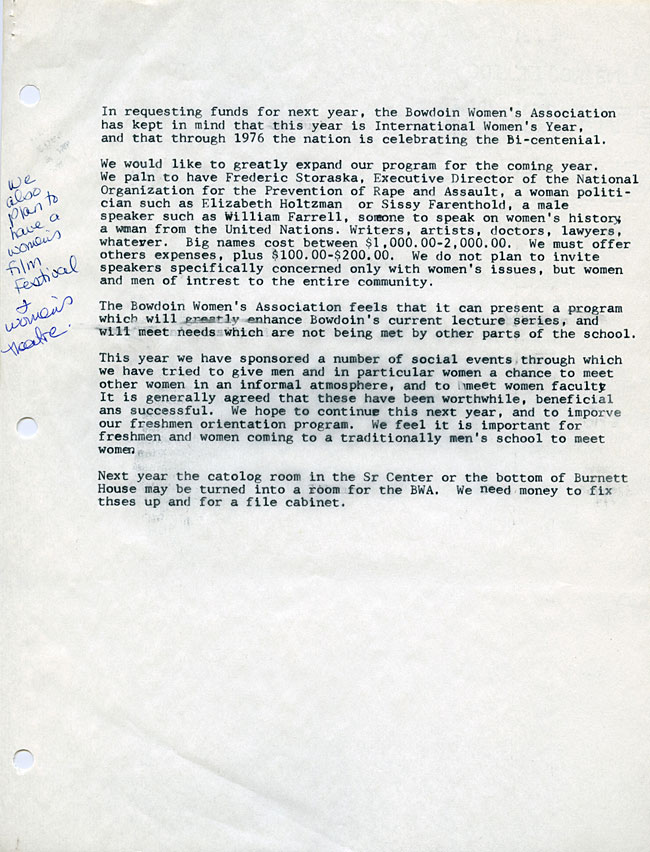The cover of the 1980-1981 Bowdoin Women’s Association Handbook features a picture of four naked women dancing beneath a crescent moon and reads, “Women Rising: Ten Years of Women at Bowdoin.” The word “rising” likely refers to the title of the alma mater, “Rise Sons of Bowdoin” (Document CS, 63). Ever since the arrival of women, daughters of Bowdoin were “rising” alongside its sons. These women featured on the handbook’s cover dance in celebration of 10 years (9 years according to our timeline) of women at the college. By holding hands they join forces as women, supporting and empowering one another.
In addition to providing women with information, this handbook aims to build community around women’s issues at Bowdoin. The writers express a hope for expansion of the Bowdoin Women’s Association. During this one-year, for example, they planned a celebration of ten years of women at Bowdoin, a symposium on life for women after Bowdoin, workshops on self-defense and healthcare, discussion groups and lectures.
The articles in the handbook provide information on a variety of women’s issues at the college. In one, the immediate past president of the Bowdoin Women’s Association and previous vice-president of her fraternity examines the recent history of women’s status in fraternities. She raises the pros and cons of joining a fraternity and is complementary of the choice to remain “independent.” She wishes the best to the incoming class of 1984 and writes, “May Bowdoin be as good to you as it was to me.” Another article lists the numerous options for women’s sports available to students. The authors encourage athletic involvement and mention the discrepancy in funding between male and female athletic programs. A section on healthcare urges Bowdoin women to take advantage of the free gynecological services. The two last sections provide information on security support and political groups on campus.
In a nod to the feminism alive on Bowdoin’s campus in the 1980s, the terms “freshpeople” and “freshpersons” are used throughout the publication instead of the word “freshmen.” Nowadays “freshpeople” are referred to as “first years” at the college.
The paragraph announcing the new Women’s Resource Center describes the center’s abundance of resources for the Bowdoin community. The article mentions event plans, the center’s new library, and the hope that the new headquarters of the Bowdoin Women’s Association will be a space reader’s feel comfortable visiting “for assistance or just conversation.”
The last section of the publication discusses how women had “made their mark at Bowdoin after this first decade.” The student body was now 50/50 male/female, the Bowdoin’s Women’s Association had “become the largest student supported organization on campus,” the Women’s Resource Center was opening this fall, and the results of a report on “the Status of Women at Bowdoin” were to be published. The authors identified the most substantial sign of change as the arrival of 13 new women faculty members.
